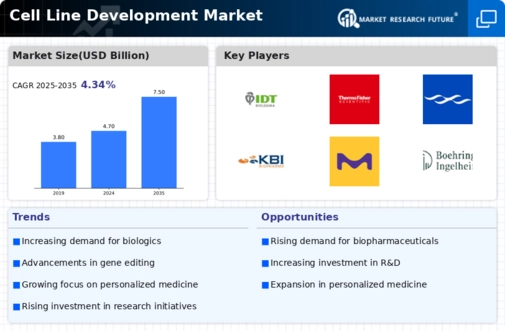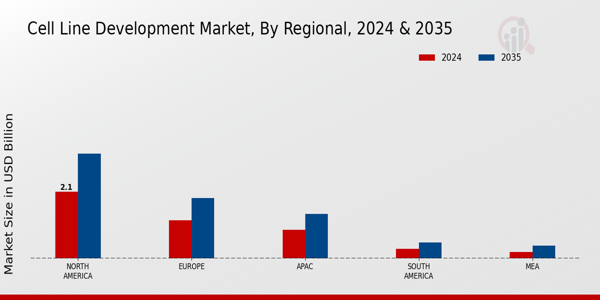Market Analysis
In-depth Analysis of Cell Line Development Market Industry Landscape
The cell line development market has seen notable trends in recent years, driven by advancements in biotechnology and increased demand for cell-based therapies and biopharmaceuticals. One prominent trend is the rising adoption of novel technologies for cell line engineering and optimization. Researchers and biopharmaceutical companies are leveraging techniques such as CRISPR/Cas9 gene editing and high-throughput screening to develop cell lines with enhanced productivity, stability, and desired biological characteristics. These technologies not only expedite the cell line development process but also enable the creation of cell lines tailored for specific applications, contributing to improved efficiency and efficacy in biomanufacturing.
Another significant trend in the cell line development market is the growing emphasis on the development of bioproduction cell lines for emerging modalities such as cell and gene therapies. With the increasing commercialization of cell therapies and gene editing technologies, there is a growing need for scalable and reproducible cell lines capable of producing therapeutic proteins, viral vectors, and engineered cells. Consequently, there has been a surge in research and investment focused on establishing robust cell lines suitable for large-scale biomanufacturing of these advanced therapies, addressing critical challenges related to yield, quality, and regulatory compliance.
Furthermore, the cell line development market is witnessing a shift towards the use of alternative expression systems beyond traditional mammalian cell lines. While mammalian cells remain the preferred choice for many biopharmaceutical applications due to their ability to produce complex proteins with human-like post-translational modifications, alternative expression systems such as microbial and insect cells are gaining traction for certain applications. These systems offer advantages such as lower production costs, simpler cultivation requirements, and higher expression levels for certain proteins, driving their adoption in biomanufacturing processes and expanding the diversity of cell line options available to researchers and manufacturers.
Moreover, there is a growing focus on the development of cell lines derived from non-traditional sources, including stem cells and primary cells obtained from diverse species. Stem cell-derived cell lines hold promise for regenerative medicine and disease modeling applications, offering the potential to generate functional cell types for transplantation and drug discovery. Similarly, primary cells sourced from various tissues and organisms are being explored for their utility in studying disease mechanisms, drug responses, and toxicity profiles, fueling research efforts to establish reliable methods for immortalizing and culturing these cells in vitro.
Additionally, the cell line development market is experiencing increased collaboration and partnerships among industry players to streamline the development and commercialization of novel cell-based products. Biotechnology companies are forming strategic alliances with contract research organizations (CROs), academic institutions, and technology providers to access specialized expertise, resources, and technologies for accelerating cell line development initiatives. Collaborative efforts encompass a wide range of activities, including technology licensing, joint research projects, and co-development agreements, aimed at overcoming technical challenges, reducing development timelines, and expanding market reach.













Leave a Comment